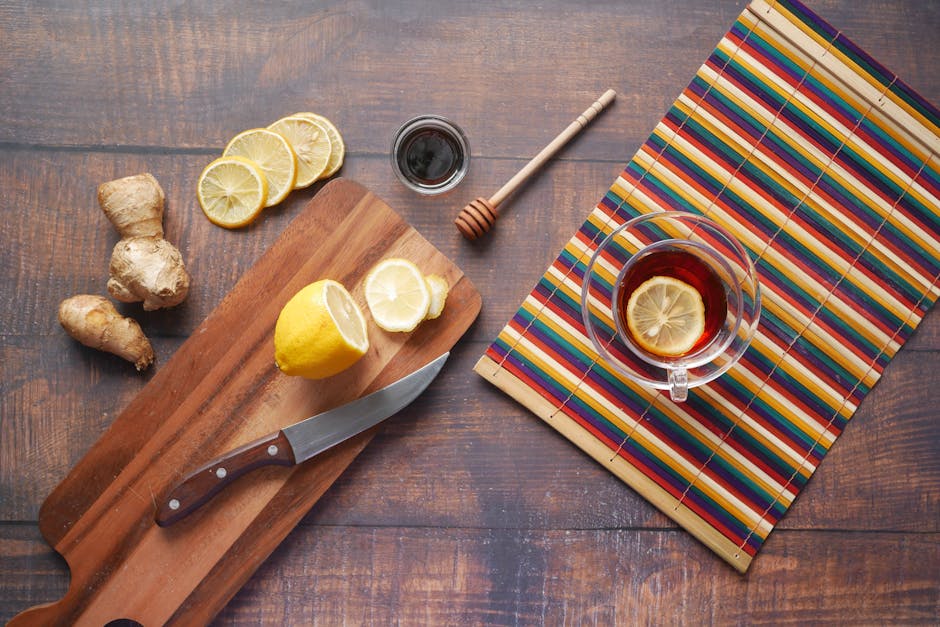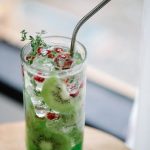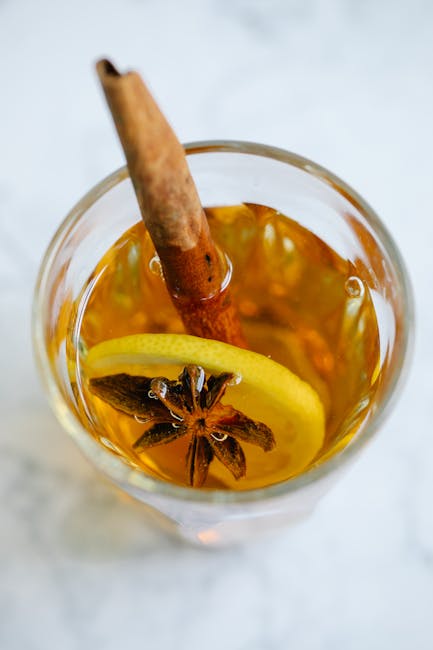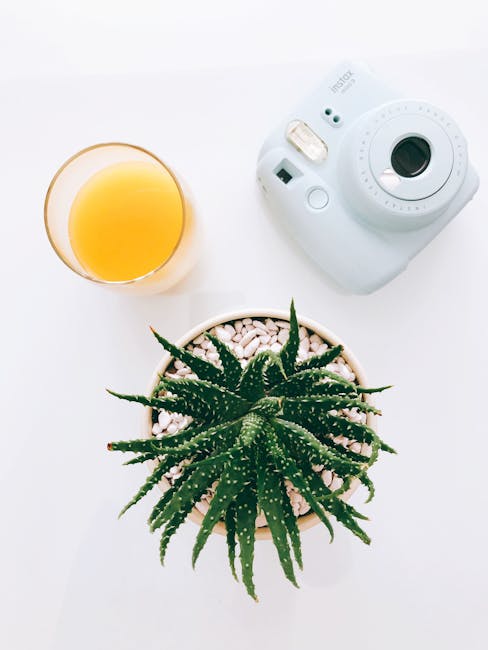Honey lemon ginger tea, a seemingly simple beverage, boasts a rich and complex history interwoven with diverse cultures and traditions. While pinpointing its exact origin is difficult, its individual components – honey, lemon, and ginger – have been used medicinally and culinarily for millennia across various civilizations. Honey’s use dates back to ancient times, with evidence of its production and consumption found in cave paintings and archaeological sites from over 8,000 years ago. Its inherent sweetness and antimicrobial properties made it a valuable commodity and a staple in ancient Egyptian, Greek, and Roman societies. Similarly, lemons, originating in Southeast Asia, were prized for their vitamin C content and were traded extensively along ancient trade routes, eventually finding their way into Mediterranean cuisines and beyond.
Ginger, with its origins in Southeast Asia as well, holds a prominent place in traditional medicine systems across the globe. Ancient Ayurvedic and Traditional Chinese Medicine practices both utilized ginger for its anti-inflammatory and digestive properties, incorporating it into various remedies and tonics. The combination of these three ingredients likely emerged organically, as different cultures independently discovered their synergistic effects. The exact timeline of this combination’s development remains unclear, but its popularity grew significantly with the spread of global trade and the increased exchange of culinary practices. The precise moment when honey, lemon, and ginger were first combined into a tea remains elusive, lost in the mists of time and diverse culinary traditions.
Today, honey lemon ginger tea enjoys widespread popularity as both a comforting beverage and a home remedy. Its soothing qualities are often cited for alleviating cold symptoms, easing sore throats, and aiding digestion. This widespread appeal is reflected in its global consumption; while precise statistics are difficult to obtain for a beverage so readily made at home, market research indicates a substantial and growing demand for commercially produced versions, reflecting its continued relevance in contemporary culture. The beverage’s popularity is also evidenced by its numerous variations, with additions like cinnamon, cloves, or mint often incorporated to enhance flavor and purported health benefits. The versatility and adaptability of honey lemon ginger tea further underscore its enduring appeal, making it a drink that seamlessly blends ancient traditions with modern tastes.
Beyond its practical applications, honey lemon ginger tea also holds cultural significance. In many cultures, it represents warmth, comfort, and care. The act of sharing a cup of this tea often signifies hospitality and connection, reflecting a deep-seated appreciation for simple pleasures and the healing power of natural ingredients. Its enduring popularity is a testament to its effectiveness, its versatility, and its ability to transcend geographical boundaries and cultural differences, solidifying its place as a beloved and globally recognized beverage.
Ingredients and Measurements
Crafting the perfect cup of Honey Lemon Ginger Tea hinges on using high-quality ingredients and precise measurements. While the ratios can be adjusted to your personal taste, starting with these recommendations will ensure a balanced and flavorful brew.
Fresh Ginger: We recommend using approximately 1-2 inches of fresh ginger root, peeled and thinly sliced. The amount can be adjusted based on your desired ginger intensity. Less ginger will result in a milder, sweeter tea, while more will create a spicier, more pungent beverage. Avoid using pre-ground ginger as the fresh root offers a far superior flavor and aroma. When choosing your ginger, look for firm, unblemished roots with a vibrant aroma.
Lemons: One medium-sized lemon will typically suffice for a single serving or a small batch of tea. However, you can adjust this based on your preferred level of tartness. Using fresh lemons is crucial for the best taste and vitamin C content. Avoid using bottled lemon juice, as it often lacks the vibrancy and complexity of fresh-squeezed juice. When selecting lemons, choose those that feel heavy for their size, indicating high juice content. A slightly soft lemon is preferable to a rock-hard one, suggesting juicier flesh.
Honey: The amount of honey depends entirely on personal preference and the sweetness of your tea. Start with 1-2 tablespoons of honey for a single serving (approximately 8 ounces of water). Raw honey is highly recommended due to its unique flavor profile and potential health benefits. However, any type of honey will work. Remember that honey’s sweetness can vary depending on the floral source, so adjust accordingly. Taste the tea after adding honey and add more if needed. It’s easier to add more honey than to take it away.
Water: The quality of your water significantly impacts the final taste of your tea. Use filtered or spring water for the best results. Tap water can sometimes contain minerals that can affect the flavor. For a single serving, you’ll need approximately 8 ounces (240ml) of water. For larger batches, simply scale up the proportions of other ingredients accordingly. Bring the water to a rolling boil before adding the other ingredients. This ensures proper extraction of flavors and aromas from the ginger.
Optional additions: Consider experimenting with other ingredients to customize your tea. A few sprigs of fresh mint or a cinnamon stick can add interesting layers of flavor. A pinch of turmeric adds an earthy note and potential health benefits. Remember to adjust the other ingredients (especially honey) to compensate for added flavors. Always start with small amounts of optional ingredients and add more to taste.
Measuring tools: For accurate measurements, use a kitchen scale for the ginger and a measuring spoon for the honey. A citrus juicer will ensure you extract the maximum amount of juice from your lemon. Having these tools ensures consistency and helps you refine your recipe over time.
Equipment List
Making honey lemon ginger tea requires minimal equipment, but the right tools can significantly enhance the process and the final product’s quality. Below is a detailed list of recommended equipment, along with explanations of their use and alternatives where applicable.
1. Kettle (1.5-2.0 Liter Capacity): A kettle is essential for heating the water to the optimal temperature for brewing tea. A larger capacity (1.5-2.0 liters) is recommended, particularly if you are making a large batch of tea or frequently make tea for multiple people. Avoid using microwaves to heat water for tea, as it can lead to uneven heating and potentially scorch the tea leaves. Electric kettles with temperature control are ideal, allowing you to precisely heat the water to the desired temperature (around 175-200°F or 80-93°C for optimal ginger and lemon flavor extraction).
2. Teapot or Infuser (1-1.5 Liter Capacity): Once the water is heated, you’ll need a vessel to steep the tea. A teapot with an infuser basket is ideal, as it allows for easy removal of the ginger and lemon slices after steeping. A 1-1.5 liter teapot is suitable for brewing a decent quantity of tea. If you don’t have a teapot with an infuser, a heat-resistant glass or ceramic mug with a separate infuser can be used. Ensure the teapot or infuser is made of a material that won’t react with the hot water or the ingredients. Avoid using plastic or metal infusers that may leach chemicals into your tea.
3. Measuring Cups and Spoons: Precise measurements are crucial for achieving the desired flavor balance. Having a set of measuring cups (at least 1 cup, ½ cup, and ¼ cup) and measuring spoons (1 tablespoon, 1 teaspoon, ½ teaspoon) will ensure consistency in your tea-making process. Using a kitchen scale for more accurate measurements of ginger and honey is also recommended, especially if you’re making multiple batches.
4. Cutting Board and Knife: You’ll need these to prepare the ginger. A sharp knife will make slicing the ginger easier and more efficient. Choose a cutting board that is easy to clean and won’t harbor bacteria. A plastic or wooden cutting board is suitable. Avoid using a glass cutting board as it can dull your knife quickly.
5. Citrus Juicer (Optional):While you can squeeze the lemon juice by hand, a citrus juicer will extract more juice efficiently. A manual hand juicer is a simple and inexpensive option, but electric juicers can be faster and more effective for larger quantities. If using a manual juicer, ensure it’s clean and free of any lingering smells from previous uses.
6. Serving Cups or Mugs: Finally, you’ll need cups or mugs to serve your delicious honey lemon ginger tea. The choice depends on personal preference, but heat-resistant mugs are recommended to prevent burning your hands.
7. Strainer (Optional): If you choose to steep the ginger and lemon directly in the hot water without an infuser, a fine-mesh strainer will be necessary to remove the solids before serving. Choose a stainless steel strainer for durability and ease of cleaning.
Instructions
Crafting the perfect Honey Lemon Ginger Tea is a simple yet rewarding process. Follow these instructions carefully for optimal flavor and health benefits. Remember that adjustments to sweetness and strength are entirely personal preferences.
Step 1: Preparing the Ginger. Begin by preparing your ginger. For a robust ginger flavor, use approximately 1-2 inches of fresh ginger root. Peel the ginger using a spoon or vegetable peeler – this is easier than using a knife and avoids wasting valuable ginger. Finely slice or grate the ginger. Using fresh ginger is highly recommended for the most vibrant flavor and health benefits; however, you can substitute with 1-2 teaspoons of ground ginger if needed. Keep in mind that ground ginger will impart a slightly different flavor profile.
Step 2: Boiling the Water. Bring 8 ounces (approximately 240ml) of filtered water to a rolling boil in a small saucepan. Using filtered water helps to remove any potential chlorine taste that might interfere with the delicate flavors of the tea. Avoid using tap water directly from the tap if you notice a strong chlorine taste or odor in your water supply.
Step 3: Infusing the Ginger. Once the water boils, add your prepared ginger slices or ground ginger to the saucepan. Reduce the heat to a simmer and allow the ginger to infuse for 5-7 minutes. This allows the beneficial compounds and flavor from the ginger to fully release into the water. Do not let the mixture boil vigorously after adding the ginger, as this can make the tea taste bitter.
Step 4: Adding Lemon and Honey. After 5-7 minutes, remove the saucepan from the heat. Add the juice of half a medium-sized lemon (approximately 2 tablespoons) to the ginger infusion. Freshly squeezed lemon juice is preferred for its superior flavor and vitamin content, but bottled lemon juice can be used in a pinch. Stir gently to combine. Finally, add honey to taste. Start with 1-2 teaspoons and add more according to your preference. Remember that honey’s sweetness can vary depending on the type.
Step 5: Serving and Enjoying. Strain the tea through a fine-mesh sieve or cheesecloth into your favorite mug to remove the ginger pieces and any residual pulp. Discard the ginger solids after straining. Enjoy your warm Honey Lemon Ginger Tea immediately. If you prefer a less intense ginger flavor, reduce the steeping time. If you prefer a stronger ginger flavor, increase the steeping time slightly and use more ginger.
Professional Recommendation: For optimal health benefits, consume your Honey Lemon Ginger Tea warm, but not scalding hot. This allows you to fully appreciate the flavors and maximizes the absorption of beneficial nutrients. Consider adding a cinnamon stick during the steeping process for an additional layer of warmth and flavor.
Important Note: Always consult with your doctor before incorporating significant dietary changes, particularly if you have pre-existing health conditions or are taking medications.
Brewing Time & Temperature
Brewing honey lemon ginger tea involves a delicate balance of time and temperature to extract the optimal flavors and health benefits from each ingredient. Getting this right ensures a delicious and potent cup every time. The key is to avoid over-steeping, which can lead to bitterness, and under-steeping, which results in a weak and underwhelming brew.
Water Temperature: The ideal water temperature for brewing honey lemon ginger tea is between 190°F (88°C) and 200°F (93°C). This temperature range is crucial for extracting the beneficial compounds from the ginger root without scorching the delicate lemon and honey flavors. Using water that’s too hot can result in a bitter and astringent taste, while water that’s too cool won’t fully extract the flavor and aromatic compounds from the ingredients.
Measuring Your Water: For a single serving (approximately 8 ounces or 237 ml), use one cup of water. For larger batches, simply scale up the quantities proportionally. Using a gooseneck kettle allows for precise pouring and minimizes splashing, ensuring even saturation of the tea ingredients.
Ginger Preparation: The form of ginger you use will influence brewing time. Fresh ginger root requires more time to release its flavor. For a standard 1-inch piece of fresh ginger, thinly sliced or grated, a brewing time of 5-7 minutes is recommended. If using pre-ground ginger, reduce the brewing time to 3-5 minutes to avoid bitterness. Pre-ground ginger releases its flavor more rapidly.
Lemon Addition: Add the lemon juice or slices *after* the brewing process is complete. Adding lemon during the brewing process can lead to a bitter and less aromatic brew. The delicate oils in the lemon peel are best preserved by adding them at the end. This also prevents the lemon from becoming over-extracted and bitter.
Honey Sweetening: Honey should also be added after brewing. This preserves its natural enzymes and prevents caramelization which can alter its flavor profile and potentially introduce a burnt taste. Add honey to taste – start with 1-2 teaspoons and adjust to your preference. Remember that the sweetness of honey can vary depending on the type.
Steeping Time: Once the water is at the correct temperature, pour it over your ginger. Allow it to steep for the recommended time (5-7 minutes for fresh ginger, 3-5 minutes for ground ginger). Never exceed 10 minutes, as this can result in an excessively bitter and astringent tea. After steeping, remove the ginger (if using fresh) and add your lemon juice or slices and honey. Stir gently to combine.
Professional Recommendation: Experimentation is key to finding your perfect brew. Adjust the brewing time and the amount of ginger and lemon to suit your taste preferences. Start with the recommended times and adjust accordingly. Keep notes on your experimentation to refine your technique and consistently produce delicious honey lemon ginger tea.
Serving Suggestions
Honey Lemon Ginger Tea is incredibly versatile and can be enjoyed in a multitude of ways, depending on your preference and the occasion. Whether you’re seeking a comforting warm beverage on a chilly evening or a refreshing iced tea on a hot summer’s day, we’ve got suggestions to elevate your tea experience.
Classic Warm Serve: For the quintessential warm honey lemon ginger tea experience, steep 1-2 tea bags (or 1-2 tablespoons loose leaf) in 8 ounces of freshly boiled water for 5-7 minutes. Remove the tea bags/strain the loose leaf, and then add 1-2 teaspoons of honey (adjust to your sweetness preference) and the juice of ½ a lemon. Stir gently until the honey is fully dissolved. For an extra touch of warmth and spice, consider adding a thin slice of fresh ginger to the cup before adding the hot water. Let it steep along with the tea for a more intense ginger flavor.
Iced Honey Lemon Ginger Tea: To enjoy a refreshing iced version, prepare a stronger brew by using twice the amount of tea bags or loose leaf in the same amount of water. Let it steep for 8-10 minutes to extract maximum flavor. Allow the tea to cool completely before pouring it over ice. Add 1-2 teaspoons of honey and the juice of ½ a lemon per 8 ounces of iced tea. For a more visually appealing drink, consider using large ice cubes to prevent rapid dilution. Garnish with a lemon wedge and a thin ginger slice for an extra touch of elegance.
Honey Lemon Ginger Tea with Sparkling Water: For a sophisticated twist, try adding sparkling water to your brewed honey lemon ginger tea. Prepare the tea as directed for the warm serve, then add 4-6 ounces of chilled sparkling water to an 8-ounce serving. This adds a delightful fizz and a lighter, more effervescent feel. Adjust the amount of sparkling water to control the level of carbonation to your preference. A squeeze of extra lemon juice can enhance the brightness of the drink.
Adding Other Ingredients: Don’t be afraid to experiment! Honey lemon ginger tea provides a wonderful base for various additions. A sprig of fresh mint adds a refreshing herbal note. A dash of cinnamon or cardamom brings warmth and complexity. For a more robust flavor, consider adding a splash of apple cider or orange juice. Remember to taste as you go and adjust the ingredients to your liking. Experimenting is key to discovering your perfect cup.
Serving Temperature: While warm tea is most commonly preferred, the ideal serving temperature is subjective. Serve warm but not scalding to avoid burning your mouth. For iced tea, ensure it’s thoroughly chilled for optimal refreshment. The perfect temperature will depend on personal preference and the time of year.
Storage: Leftover brewed tea can be stored in the refrigerator for up to 2 days. However, we recommend enjoying it fresh for the best flavor and aroma. The essential oils and delicate flavors may diminish over time.
Storage Instructions
Proper storage of your Honey Lemon Ginger Tea is crucial to maintaining its freshness, flavor, and overall quality. Following these instructions will help ensure you enjoy the best possible taste and benefit from its natural ingredients for as long as possible.
For unopened packages (pouches or boxes): Store unopened packages of Honey Lemon Ginger Tea in a cool, dry, and dark place. Avoid areas with direct sunlight, excessive heat (above 75°F or 24°C), or high humidity. These conditions can degrade the quality of the tea, leading to a loss of flavor and aroma. Fluctuations in temperature and exposure to light can also affect the shelf life of the product. Ideal storage conditions will help maintain the integrity of the herbs and honey, preserving their beneficial properties. The best-before date printed on the package should be adhered to.
For opened packages (pouches or boxes): Once you’ve opened a package of Honey Lemon Ginger Tea, it’s vital to seal it properly to prevent exposure to air and moisture. After each use, firmly close the bag or container using a clip or tie. Transferring the remaining tea to an airtight container, such as a glass jar with a tight-fitting lid, is highly recommended. This will significantly extend the shelf life of your tea and prevent the ingredients from drying out or becoming stale. Avoid storing the tea in plastic bags, as these can trap moisture and lead to mold growth.
For brewed tea: Brewed Honey Lemon Ginger Tea should be consumed immediately for optimal flavor and freshness. If you have leftover brewed tea, store it in an airtight container in the refrigerator for up to 24 hours. However, be aware that the flavor and aroma may diminish slightly over time. Do not reheat brewed tea, as this can alter its taste and potentially reduce its beneficial properties. Discarded brewed tea should be disposed of promptly to avoid spoilage.
Quantity Considerations: To prevent waste and maintain freshness, consider purchasing quantities of Honey Lemon Ginger Tea that you can reasonably consume within the recommended shelf life. Buying smaller quantities more frequently can be a valuable strategy, especially if you are not a regular consumer. This ensures that you are always enjoying tea at its peak quality.
Environmental Considerations: When disposing of used tea bags or packaging, please consider recycling options where available. Proper disposal helps reduce environmental impact and promotes sustainable practices.
Professional Recommendations: Always check the packaging for specific storage instructions provided by the manufacturer. These instructions may vary depending on the specific formulation and ingredients of your Honey Lemon Ginger Tea. If you have concerns about the quality or freshness of your tea, it’s best to err on the side of caution and discard it rather than risk consuming spoiled product. Ignoring proper storage instructions can lead to a compromise in quality, taste, and potentially, safety.
Honey Lemon Ginger Tea: Recommendations
Honey Lemon Ginger Tea is a delightful and healthful beverage perfect for any time of day. Its warming spices and refreshing citrus make it an ideal choice for both invigorating mornings and soothing evenings. To fully appreciate its benefits and deliciousness, follow these recommendations.
Serving Suggestions: For the best flavor, we recommend using freshly brewed tea. Steep a tea bag (or equivalent loose leaf) in hot (not boiling) water for 3-5 minutes. Adjust steeping time to your preference for a stronger or milder brew. Add a tablespoon of honey and the juice of half a lemon. For an extra kick, add a thin slice of fresh ginger to the cup. You can also experiment with adding a sprig of fresh mint or a cinnamon stick for an enhanced flavor profile. Serve hot or allow to cool for a refreshing iced tea. Consider adding a splash of sparkling water for a fizzy variation. For a creamier texture, add a splash of milk or cream after brewing.
Storage Conditions: To maintain the freshness and quality of your Honey Lemon Ginger Tea, proper storage is crucial. If using loose leaf tea, store it in an airtight container in a cool, dark, and dry place. This will help prevent oxidation and maintain the flavor and aroma of your tea. Tea bags should also be stored in an airtight container. Once brewed, the tea is best consumed immediately for optimal taste and nutritional value. Leftover tea can be refrigerated for up to 24 hours, but its flavor may diminish slightly.
Complementary Dishes: This versatile tea pairs well with a variety of dishes. Its zesty and warming notes complement both sweet and savory foods. Consider enjoying it alongside a light breakfast such as yogurt with granola and berries, or a savory oatmeal. It also pairs beautifully with pastries like scones or muffins. For a more substantial meal, it complements lighter dishes like chicken salad sandwiches, or vegetable-based soups and stews. The ginger’s spiciness also cuts through the richness of richer dishes like curries or stir-fries.
Nutritional Information (per 8oz serving, approximate values): The nutritional content varies depending on the type and amount of tea, honey, and lemon used. However, a typical serving will contain minimal calories, primarily derived from the honey (approx. 20-40 calories). The tea itself offers antioxidants and beneficial compounds. Lemon provides Vitamin C, while ginger contributes anti-inflammatory properties. Please note: This is an estimate, and actual values may vary. For precise nutritional information, consult the specific ingredients used in your tea preparation.
Important Considerations: While generally safe, individuals with specific allergies or health conditions should exercise caution. Those with sensitivities to honey, lemon, or ginger should avoid consumption. Pregnant or breastfeeding women should consult their healthcare provider before significantly increasing their ginger intake. Always use high-quality ingredients for the best flavor and health benefits.





